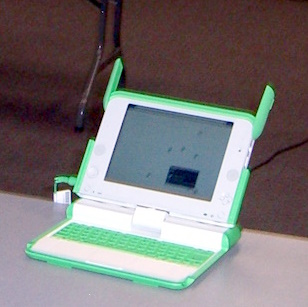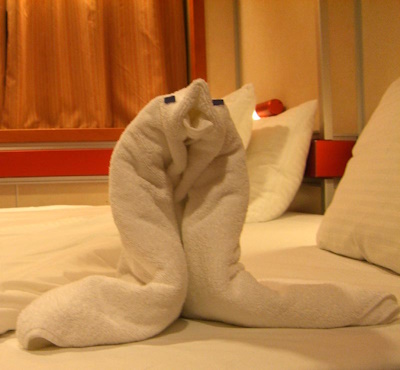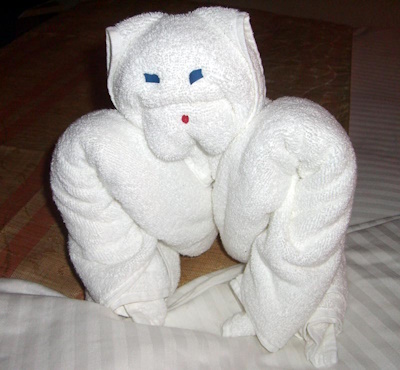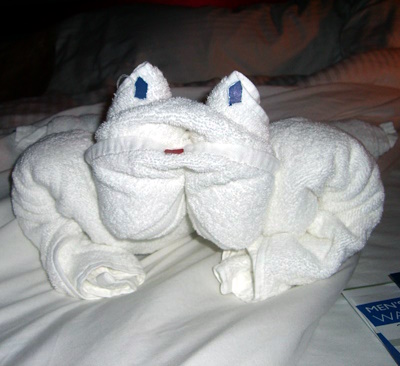5 members of the CFI book club attended the discussion. 3 of them have finished the book, 2 haven't but were planning to finish. For some reason we didn't get much discussion mileage out of this book. It did not prompt discussions as lively as the two previous books the CFI book club read, "The Sparrow" and "Towing Jehovah".
Everybody agreed the story starts out interesting but loses steam towards the end. A reader who characterized "American Gods" as half mythology, half modern road movie, said this setup pulled him through the first two thirds of the novel, but then he started to lose interest. Everybody felt pretty much the same.
The best part of the book: details, subplots, digressions
What people found the most memorable about "American Gods" was not the overarching idea or characters, but the details: various little tidbits, plot snippets and sub-stories that made this book a rather unusual piece of work. It is full sub-plots and sub-sub-plots that sometimes threw the readers off course, even if in a good way. For example, a few readers wondered about the significance of the taxi driver episode. Or the life story of an African woman who was sold into slavery and brought to colonial America. What role did these interludes play in the plot? Was it just to illustrate various ways gods from all over the world migrated to the US? One reader observed that Neil Gaiman usually manages to tie the plot threads that seem disparate (for example, "Sandman" has dozens upon dozens of plot threads, but most of them have an effect on the story), whereas in "American Gods" a lot of plot threads didn't have a connection.
And the concept of importing gods does not seem to be consistently thought out. Someone in the group wondered: when people came to America and brought their gods, did they duplicate them, or did they bring the only instance of a god to America? At the time when they came, there must have been a lot of people in the home country believing in the particular god, so this would imply most of those gods had "forked" (if you put it that way). Actually, I think the afterword answers that question: the immigrants indeed brought replicas of gods with them. In that case the central conflict is a bit myopically American-centered. You would wonder why the originals of the old gods did not back up the duplicates in the final battle? (Unless they too were dying out in their home countries, which seems plausible.)

Neil Gaiman book reading at Book People in Austin, TX, September 2005.
The most interesting characters end up as "furniture"
Speaking about the uniquely American flavor of the book, its main redeeming quality, in my eyes, is Gaiman's pitch-perfect rendition of small town America and all the colorful weirdos that live in it. I was impressed how Gaiman portrayed each of Shadow's quirky, kind, mysterious neighbors as a distinct person, with unique patterns of speech; how he brought those characters to life with just a few details. However, until the very end it didn't seem that those secondary and tertiary characters were more than "furniture" in Gaiman's picture of small town America. Admittedly, it was an interesting picture, bleak and cozy at the same time, and worth of a book in and of itself, but still, it was hard to see how those characters were significant. Shadow's interactions with them appeared to be digressions an author resorts to when he doesn't know how to advance the plot. I amended my opinion somewhat after reading the last 20-30 pages, as it turns out that some of the subplots involving secondary characters get tied up in the main plot line. Still it is less than satisfactory to have them tied up after the fact, rather than organically woven into the plot.
The plot loses steam towards the end
The general opinion of our group was that you may have fun with the details, but the book lacks something... overarching. Well, you can't say it lacks a concept, because it does have a rather unusual central concept. It's the notion that gods exist only as long as there are people who believe in them, and that believers brought their gods along as they migrated around the world. But a good premise is not enough to make a good novel. For one thing, this idea is not entirely new: as one reader pointed out, Terry Pratchett played with it in "Small Gods". The execution is what makes a book worth reading, and the execution of this novel fell apart towards the end. None of the 5 readers that took part in the discussion thought the ending made much sense, or had a clear idea of Shadow's role in the resolution of the central conflict. The way the plot petered out towards the end made it hard for me to sustain interest. I'm not sure if this testifies to my degree of sleep deprivation, or to some real flaws of the book, that I fell asleep while reading what was supposed to be the climactic scene, the battle of the gods.
I also wasn't sure what was even the point of a battle between old and new gods, given that most of the old gods were dying anyway. The conflict, as it was presented in the book, had little relevance to the world at large. Most people, unaware of those gods' existence, would not have noticed their disappearance.
I'm also surprised that neither old nor new gods tried to make an alliance with Jesus or Allah, as the latter two are still among the most powerful imaginary entities on the planet. However, introducing players of this caliber into the plot would have made it much more complicated, so I can understand the reason for this omission.
The book is oddly in favor of religion?
I guess this book may feel rewarding is if you are among people who bemoan lack of spirituality in the modern western society. Such a person may find themselves sagely nodding their head in agreement. Gaiman's observations about America's lack of soul, lack of spiritual places and a need to create artificial spiritual places would certainly seem poignant to me... if I believed that "spirituality" is a definable notion, and that there was more of it in the past (or in less advanced societies) than there is now. But since I don't believe that, those observations, while witty, sounded hollow to me. CFI being what it is, most of our group members did not identify with that sentiment either. "The book is oddly in favor of religion," concluded one of our readers.









